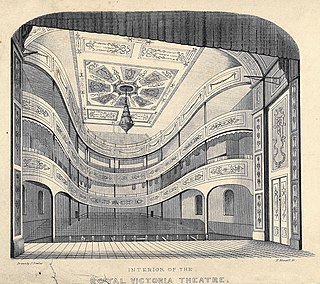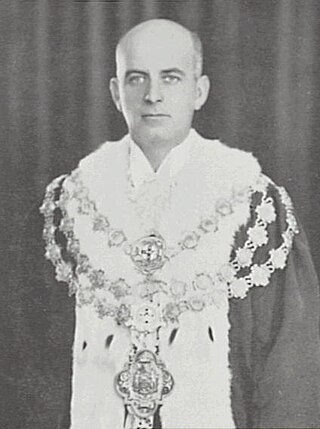Related Research Articles

Anthony Hordern & Sons was a major department store in Sydney, New South Wales, Australia. With 52 acres of retail space, Anthony Hordern's was once the largest department store in the world. The historic Anthony Hordern building, which was located on a block bounded by George Street, Liverpool, Pitt and Goulburn Streets, on what was a small hill called Brickfield Hill in the Sydney central business district, was controversially demolished in 1986, to make way for the World Square development.

The Sydney County Council (SCC) was formed in 1935 to produce electricity and operate the electricity network in a number of municipalities in metropolitan Sydney. Unlike other New South Wales county councils, which were voluntary associations of local councils to undertake local government activities permitted or required of them by the Local Governnment Act 1919, Sydney County Council was established under a separate piece of legislation by the state government to perform the electricity distribution and streetlighting operations of the local government areas concerned. On its establishment it assumed control of the Electricity Department of the Sydney City Council, which was already supplying electricity to other municipalities. In 1952, the SCC lost most its electricity generation functions to the Electricity Commission of New South Wales and retained only its distribution functions. The SCC was merged with other municipal county councils in 1990 to form Sydney Electricity.

The Criterion Theatre was a theatre in Sydney, Australia which was built in 1886 by architect George R Johnson on the south east corner of Pitt and Park streets. It closed in 1935 and the building was demolished.

The English, Scottish & Australian Bank Limited was an Australian bank founded in 1852 by Royal Charter in London and named English, Scottish and Australian Chartered Bank. Following a financial reconstruction in 1893 its business was renamed English, Scottish and Australian Bank Limited.
The MacMahon brothers were entrepreneurs in Australian show business. Chief among them were James MacMahon and Charles MacMahon, who together and separately toured a large number of stage shows. Their younger brothers, Joseph and William, were involved in many of those activities.
Ashwin and Falconer were a stained glazing partnership in Pitt Street, Sydney, New South Wales, Australia. Their work appears in a number of heritage-listed properties.

The Municipality of Mascot was a local government area in the inner south of Sydney, New South Wales, Australia. The municipality was proclaimed as the Borough of North Botany on 29 March 1888 and was renamed to the Municipality of Mascot, in order to differentiate itself from their southern neighbour, from 31 October 1911. It included the modern suburbs of Eastlakes and Daceyville, with parts of Mascot and Pagewood. From 1 January 1949, the council was amalgamated into the Municipality of Botany, with the passing of the Local Government (Areas) Act 1948.
Arthur William Jarrett was a pioneer radio broadcaster in South Australia.

The Royal Victoria Theatre, often referred to as the Victoria Theatre or The Old Vic, was a theatre in Sydney, Australia, the first large theatre in the city. It opened in 1838; operas, plays, pantomimes and other events were held, and leading entertainers performed at the theatre. It was destroyed by fire in 1880.

Sir Norman Lindfield Nock was an Australian businessman and politician. Nock was Chairman and managing director of the family hardware retail firm, Nock & Kirby, from 1925 to 1979, and was an Alderman of the City of Sydney, rising to become Lord Mayor for two terms in 1938 and 1939.
The Borough of East St Leonards was a local government area in the Lower North Shore region of Sydney, New South Wales, Australia. First proclaimed as the "Municipality of East St Leonards" in 1860, following the passing of a new Municipalities Act became a Borough in 1867. It included the modern suburbs of Kirribilli, Milsons Point, Lavender Bay (part), North Sydney (part), Neutral Bay (part), Cremorne (part), Cremorne Point and Kurraba Point. The borough lasted until 29 July 1890 when it merged with the neighbouring boroughs of St Leonards and Victoria to form the Borough of North Sydney.
Six Directions was an art collective in Sydney, Australia, formed in 1953 by six post-war immigrants from Europe. They held group exhibitions at Bissietta's Gallery, at 70 Pitt Street, Sydney in 1957 and at the Riverside Gallery, Canberra, in 1958. All were members of the Contemporary Art Society of New South Wales, and were described as bringing new interest in texture to Australia.
William John Wilson was a British actor and theatre scenery painter, who had a career in Australia that included theatre management.
The Royal Lyceum was a small theatre in York Street, Sydney founded in 1854, which was redeveloped and renamed many times, finally as the Queen's Theatre, by which name it closed in 1882.

The Prince of Wales was a theatre in Castlereagh Street, Sydney, New South Wales. It was destroyed by fire and rebuilt twice; the second time as the Theatre Royal.
William Dind was an hotelier and theatre manager in Sydney, Australia, where he was the longtime lessee of the Royal Victoria, and Prince of Wales theatres. He settled on Sydney's North Shore, where he was active in local government, and he and his son William Forster Dind, aka W. Forster Dind or William Dind jun, ran hotels which were popular with theatrical people.
Henry Osborne Jacobs was an English musician best known as an accompanist, arranger and conductor for Ada Reeve, then settled in Australia, where he had a substantial career.
George Birkbeck Mason, was an English-born Australian pianist, music and instruments retailer, dancing teacher and entrepreneur. He is perhaps best remembered as founder of Brisbane's first theatre, which eventually became the Theatre Royal, Brisbane. He was the father of organist Arthur John Mason.
References
- ↑ "Advertising". Commercial Journal and Advertiser . Vol. 6, no. 509. New South Wales, Australia. 12 September 1840. p. 3. Retrieved 3 April 2023– via National Library of Australia.
- ↑ "Advertising". The Sydney Morning Herald . Vol. XXIV, no. 3552. New South Wales, Australia. 6 October 1848. p. 4. Retrieved 1 April 2023– via National Library of Australia.
- ↑ "Century of Progress". The Sydney Morning Herald . No. 32, 047. New South Wales, Australia. 14 September 1940. p. 11. Retrieved 3 April 2023– via National Library of Australia.
- ↑ "Advertising". The Sydney Morning Herald . Vol. XLI, no. 6784. New South Wales, Australia. 3 March 1860. p. 8. Retrieved 1 April 2023– via National Library of Australia.
- ↑ "Advertising". The Sydney Morning Herald . Vol. LX, no. 9759. New South Wales, Australia. 1 September 1869. p. 1. Retrieved 1 April 2023– via National Library of Australia.
- ↑ "Death of Mr John Pope". The Daily Telegraph . No. 10183. New South Wales, Australia. 15 January 1912. p. 9. Retrieved 3 April 2023– via National Library of Australia.
- ↑ "Buildings and Works". The Sydney Morning Herald . No. 21, 538. New South Wales, Australia. 29 January 1907. p. 4. Retrieved 2 April 2023– via National Library of Australia.
- ↑ "Wireless Broadcasting". The Evening News (Sydney) . No. 17533. New South Wales, Australia. 29 August 1923. p. 8. Retrieved 3 April 2023– via National Library of Australia.
- ↑ "Broadcasting". The Sydney Morning Herald . No. 26, 808. New South Wales, Australia. 6 December 1923. p. 9. Retrieved 3 April 2023– via National Library of Australia.
- ↑ "Wireless Broadcasting". The Braidwood Review and District Advocate . New South Wales, Australia. 11 December 1923. p. 5. Retrieved 3 April 2023– via National Library of Australia.
- ↑ "Broadcasting". Singleton Argus . New South Wales, Australia. 7 June 1929. p. 8. Retrieved 3 April 2023– via National Library of Australia.